Genre: Simulation Developer: Zyrinx Publisher: Time Warner Int. Players: 1 Released: 1994
One of my favorite Genesis developers is, without a doubt, Zyrinx. That may sound a little odd, since they only released three games for the system, but you have to respect the unabashed pride these people had in their products. Just look at one of Red Zone‘s introductory screens! The graphical triumphs that abound in this game are lauded in big lettering: rotating textured backgrounds, full motion video compression, polygons, real-time zooming, and vector graphics. “All running without additional hardware.” Then you get to the opening movie, which is truly a sight to behold. It’s about fifteen seconds of glorious FMV that made me slack-jawed and giddy. The clip is cleverly stylized in order to reduce the strain on the processor, sure, but that doesn’t reduce the sheer shock value at all. Yes, my friends, Zyrinx was indeed a talented group of individuals.
What makes it all so hard to take is that, yet again, we’re looking at a game that was quickly relegated to obscurity when it was released. This penchant top-notch Genesis games seemed to have for plummeting to bargain bins and subsequently being forgotten is nothing short of infuriating. But what’s totally unforgivable is that the game is still practically unheard of, even in an age of emulation and the Internet. It’s high time Red Zone started getting some serious praise and some equally serious playtime. I’ll say it right at the outset: buy this game now. It’s not perfect, but the good far outweighs the bad.
Red Zone is played with a top-down perspective in both the compound infiltration and helicopter flight stages. Note that this is not the same as the isometric camera angle in the popular Strike series of helicopter games. In Red Zone you are viewing the game from directly above your ship, much like in vertical shmups such as Raiden Trad and M.U.S.H.A. This viewpoint allows for some awesome visuals rarely seen anywhere else on the console. The landscape is a single rotating polygon, which means that the entire world will turn in a fluid motion as you twist and turn your way through power lines and buildings.
Dotting this world are all sorts of enemy weapons and personnel, of course, but also various obstructions. These are done in vector graphics that move at different rates and are displayed at different scale factors, giving an impressive sense of depth to the environments. The map is also a joy to behold, with its realistic staged zooming and your reflection in the glass. I could go on for ages about the graphics in Red Zone, but to do so would involve lots of repetition and meaningless superlatives. The result is a game that is among the most graphically advanced titles on the system, packing so much boggling eye-candy that it merits a purchase as a sort of tech demo, if for no other reason.
To the relief of all, however, Red Zone actually plays as good as it looks. The missions, although far shorter than those found in the Strike series, are highly varied and involve lots of on-foot infiltration of enemy compounds and bases. It is in these parts that Red Zone really pulls away from its competition. Urban Strike‘s sluggish and boring version of special ops can’t hold a candle to the dynamic, stylish feel that Red Zone provides. Instead of seeming like a last-minute addition, the commando stages are well integrated into the game and feature better gameplay that many Genesis run-‘n-guns!
You get to play all these missions in a game engine that leans heavily toward realism. And if there’s anything I love more in a 16-bit game than attention to detail, I can’t think of it at the moment. Unlike in the Strike games (and indeed, most of the helicopter games of the era), where there was no visible indicator of damage taken until you blew up, Red Zone takes gunfights to a whole new level by dividing your chopper into multiple segments that can each take damage individually. Thinking about going nose to nose with a SAM? Think again, because odds are you’re going to lose your sensory array, which means that your radar screen will go spotty until you can manage to find a repair kit. Damage to other elements of your machine will result in reduced speed or impaired control, and you can even lose your weapons packages (a very nasty turn of events)!
All of these firefights are backed by a thumping Eurosynth soundtrack. If you told me that the score to Red Zone was composed by Jesper Kyd,the same fellow who did the Adventures of Batman and Robin soundtrack, I wouldn’t be surprised. The similarity between the two pieces is downright eerie. Both have that melancholy, midnight-showdown sort flair, with the only obvious difference being a decidedly less in-your-face sort of approach on the part of Red Zone. It might not thunder your socks off like its aforementioned counterpart, but the bass still packs a punch, and you’ll take the haunting melodies to your grave. As far as sound effects go, you’ll be paying too much attention to staying alive and wasting targets to worry about the passable SFX library.
Red Zone has exceptional graphics, tight controls, and innovative gameplay. The only real drawback is its length – it’s just too short to be able to fully enjoy the wealth of fun the game has to offer. Then again, I suppose that’s what replays are for, right? The final assessment is that the game succeeds at all levels and is yet another must-buy for the Genesis.
SCORE: 8 out of 10

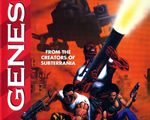
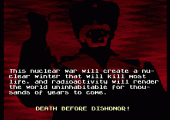
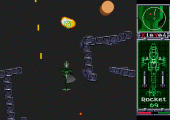
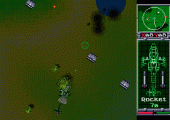
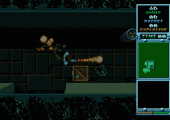
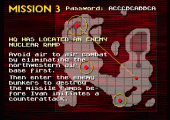
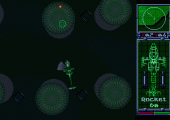
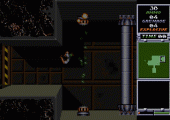
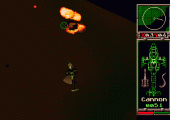
Recent Comments